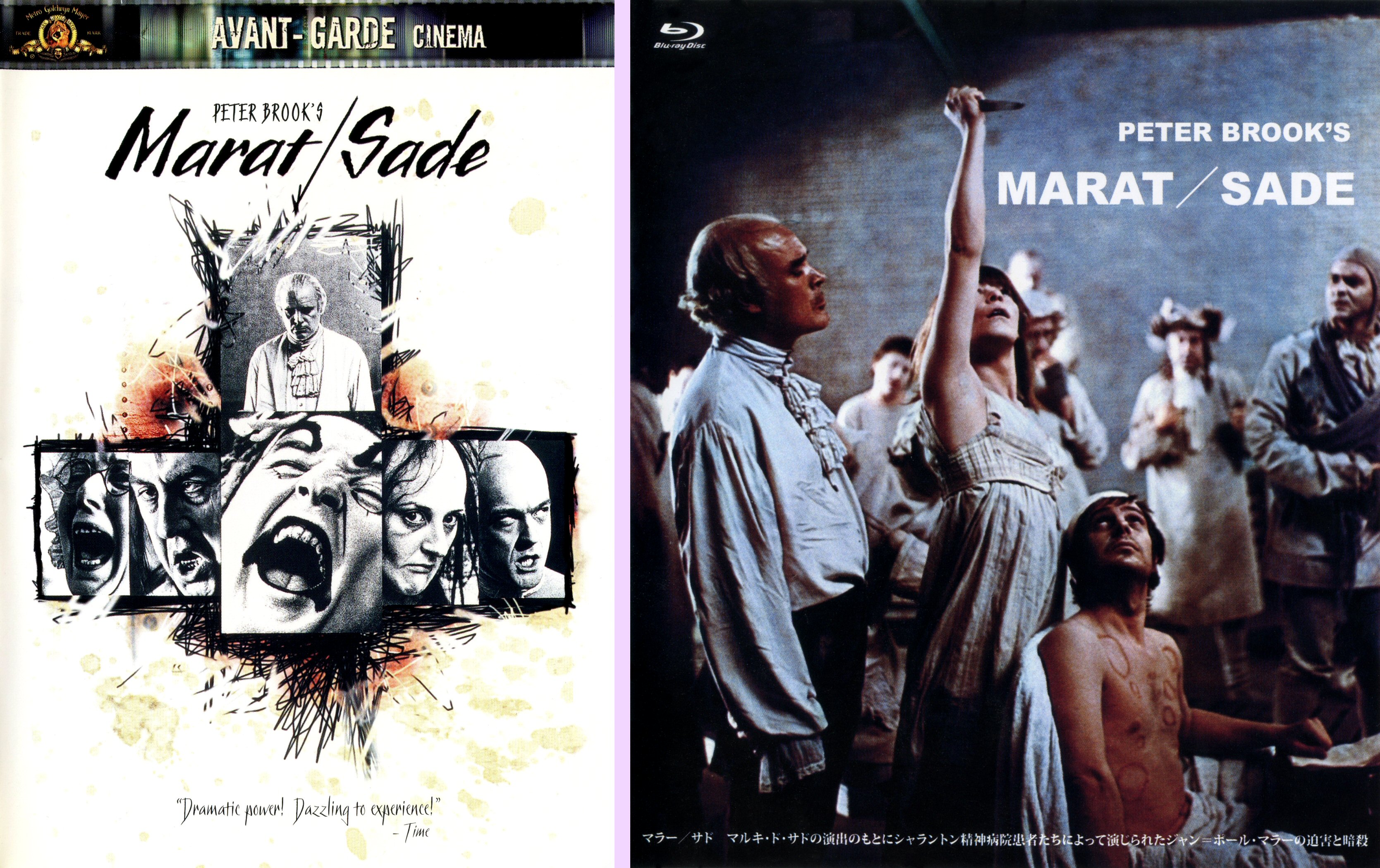If you're unfamiliar with it, the extended title pretty much tells you all you need to know. This is a production of a play Sade wrote and produced while locked in a mental asylum. It's the play itself, not a dramatization of the true story behind the whole thing (like 2000's Quills, also based on a play), but the film's not just the play performed. Even on stage, it's performed as a play about a play being performed. The actors in the film are playing the inmates putting on the play, apt to slip out of character to indulge their particular madnesses. We see the hospital staff and visitors reacting to their behavior, and part of the drama of the film is whether they'll allow the show to continue. The "inner" play dramatizes the death of Marat during the recently concluded French revolution. It's introduced by the director of the hospital, who assures us this is being put up for our delectation and the patients' rehabilitation. So we are put into the world of the 1800s audience witnessing this off-the-rails presentation of the 1700s.
If that sounds totally meta, it is. And it's a wild experience. On the one hand, it plays like a Socratic dialogue, with Marat and Sade serving as ideological poles. But it's also a salacious tale of sex and murder as told by the most base madmen. You've got some of the world's greatest actors playing complete amateurs who can barely be convinced to stand in the right place, let alone sing. Oh yes, this is a musical, too, with boisterous songs interspersed with deadly serious political and philosophical speeches. The music is all diegetic and as chaotic as the rest of the proceedings. But no, this isn't just a theatrical performance captured on film; it's a proper movie, with Brooks seamlessly blending locked shots with wildly maneuvering handheld camerawork to tell his story absolutely cinematically. It's not for everyone, but Marat/ Sade's a masterwork.
Image originally released this film on DVD all the way back in 1998. But it was fullscreen. MGM reissued it as part of their Avant-Garde Cinema line in 2001, now properly widescreen. Just one problem: it's non-anamorphic (despite what dvdcompare says), and in the modern era of widescreen TVs, that's just untenable. And unfortunately, those two crappy options are still all we've got here in the states. But the good news is: there's a whole, wide world out there! In 2019, Kinokuniva released a blu-ray edition in Japan, so that fixes that. And correcting the anamorphic problem alone would make it a must-upgrade, but still, one has to ask: how is it?
 |
| 2001 MGM DVD top; 2019 Kinokuniva BD bottom. |
And yes, the blu is fully English-friendly, with the original English mono in lossless LPCM and completely removable Japanese subtitles. The DVD only has lossy audio, of course, plus a Spanish dub and optional English subtitles (again, despite what dvdcompare says). It's a shame, though not surprising, that the BD doesn't have English subtitles, because when the inmates sing in unison, but in anarchic disharmony, it can be tough to make out what they're saying. The lossless audio does make it clearer than the DVD did, but still, those English subs would've helped for a few lines.
Both discs are pretty much barebones. The DVD had the trailer, which the blu is missing. But the BD has a 24-page, black & white booklet. Of course, the text is all in Japanese.
Of course, a fancy new Marat/ Sade from Criterion or Arrow would be super. A fresher scan, the English subs, get us the trailer back and a bunch of new extras to boot. But I'm not holding my breath. Is Arrow Academy even still a thing? At least we've finally got a solid, perfectly watchable HD edition with uncompressed audio. And if you're region-locked, remember Japan is still Region A.










No comments:
Post a Comment